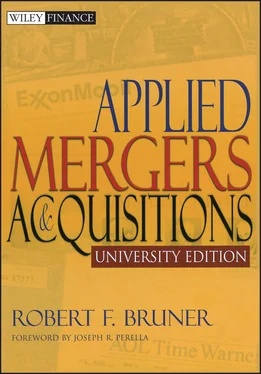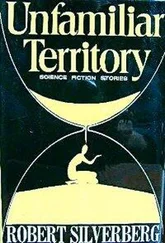Exhibit 6.15summarizes the activity in divestitures, spin-offs, and carve-outs from 1986 to 2002. The number of divestitures increased dramatically over this period, by almost five times. Also, relative to the total number of M&A transactions, divestitures account for about one-quarter to one-third of the total over time. The number of spin-offs and carve-outs is highly variable over this period and, relative to M&A activity, quite small.
EXHIBIT 6.15 Volume of Divestitures, Spin-offs, and Carve-outs by Year and as a Percentage of Total M&A Activity
|
1986 |
1987 |
1988 |
1989 |
1990 |
1991 |
1992 |
1993 |
1994 |
1995 |
1996 |
1997 |
1998 |
1999 |
2000 |
2001 |
2002 |
| Number of transactions |
|
|
|
|
|
|
|
|
|
|
|
|
|
|
|
|
|
| Divestitures |
1,357 |
1,474 |
2,103 |
2,895 |
3,701 |
5,128 |
5,002 |
5,241 |
5,414 |
6,261 |
6,580 |
7,063 |
7,044 |
7,811 |
7,735 |
6,998 |
6,283 |
| Spin-offs |
34 |
28 |
38 |
37 |
48 |
31 |
42 |
46 |
39 |
63 |
76 |
76 |
118 |
81 |
102 |
63 |
35 |
| Carve-outs |
3 |
5 |
6 |
21 |
40 |
70 |
76 |
167 |
240 |
176 |
142 |
64 |
32 |
32 |
44 |
45 |
20 |
| As a % of M&A deals |
|
|
|
|
|
|
|
|
|
|
|
|
|
|
|
|
|
| Divestitures |
35.8% |
30.8% |
31.8% |
31.5% |
36.8% |
37.2% |
37.8% |
37.8% |
33.2% |
31.8% |
31.4% |
30.9% |
28.0% |
28.5% |
26.3% |
31.3% |
34.3% |
| Spin-offs |
0.9% |
0.6% |
0.6% |
0.4% |
0.5% |
0.2% |
0.3% |
0.3% |
0.2% |
0.3% |
0.4% |
0.3% |
0.5% |
0.3% |
0.3% |
0.3% |
0.2% |
| Carve-outs |
0.1% |
0.1% |
0.1% |
0.2% |
0.4% |
0.5% |
0.6% |
1.2% |
1.5% |
0.9% |
0.7% |
0.3% |
0.1% |
0.1% |
0.1% |
0.2% |
0.1% |
Source of data: Thomson SDC Financial Services.
Research on the Profitability of Unit Divestitures, Asset Sales, and Liquidation
Exhibit 6.16summarizes studies of the shareholder wealth implications of divestiture: Announcements of divestitures uniformly create value for shareholders of sellers, on the order of a 1 to 3 percent significant abnormal return. The results for buyers are mixed: One study reports positive and significant returns (Hite et al. 1987); a second reports positive and insignificant returns (John and Ofek 1995); and a third reports negative and insignificant returns to buyers (Allen and Phillips 2000). The small absolute returns for buyers seen in the exhibit should be viewed with the same caution as discussed in Chapter 3. First, these returns occur over short time periods and should be annualized before being compared with other conventional returns to investors. Second, the divested assets are typically a fraction of the market value of the buyer or seller firm—this comparative size effect can make the profitability of divestiture seem inconsequential, when it may remain economically profitable in absolute terms.
Beneath the general results of Exhibit 6.16are some interesting insights. First, the redeployment of assets seems to be what matters, not merely the sale. This is apparent in three sets of findings.
1 Lang et al. (1995) found an announcement return of almost 4 percent when the firm committed to returning the divestiture proceeds to investors (e.g., in the form of reducing the firm’s debt). In comparison, the announcement return was insignificantly different from zero for cases where the firm planned to reinvest in the business.
2 Announcements of plant closings (Blackwell et al. 1990) are frequently the prelude to divestiture or liquidation and produce small but significantly negative returns to shareholders. Announcements of plant closings can be a surprising signal to investors of the failure of a strategy. The pattern of returns in the entire exhibit suggests that it is the redeployment of assets (e.g., through divestiture) that matters. The uncertainty about the future disposition of the investment in that plant is resolved only at the divestiture announcement.
3 Voluntary liquidations, the ultimate program of divestiture, deliver the highest returns to shareholders, in the range of 12 to 13 percent, market-adjusted. Liquidations completely disengage from business and return the funds to shareholders.
Second, the market seems to reward divestitures that focus the firm. John and Ofek (1995) document a significant relation between the announcement returns at divestiture and the degree of increase in strategic focus of the firm after divestiture. In his study of a 20-year restructuring program at General Mills, Donaldson (1990) found that announcements of the sale of noncore assets was associated with higher abnormal returns than was the sale of core-related assets (+2.03 versus –0.43 percent). Kaiser and Stouraitis (2001) studied the refocusing effort of Thorn-EMI and reported positive and significant abnormal returns.
EXHIBIT 6.16 Summary of Studies of Market Returns to Parent Shareholders at Unit Divestitures, Asset Sales, and Liquidations
| Study |
Cumulative Abnormal Returns at the Event |
Cumulative Abnormal Returns after the Event |
Sample Size |
Sample Period |
Notes |
| Boone, Mulherin (2001) |
+6.40% *full sample +12.16% *possible sale +2.93% general restructuring (days –1,0) |
|
298 97 75 |
1989–1998 |
Sample of announcements of corporate restructurings. |
| Allen, Phillips (2000) |
+0.8% selling firm –1.1% purchaser firm (days –10,+10) |
|
48 |
1982–1991 |
|
| Dittmar, Shivdasani (2002) |
+2.6% *full sample sellers +3.0% *sellers who remain diversified +2.2% *sellers who become single-segment firms (days –1,0) |
+12% full sample +14% remain diversified +17% become single (change in value estimated year t–1 to t+1) |
188 91 97 |
1983–1994 |
Sample of asset sales. Finds significant negative correlation between event returns and change in the diversification discount. |
| Berger, Ofek (1999) |
+3.0% *restructuring announcements +3.6% †(first announcement +1.3% †second or later annc’ts. +7.3% †all sale related annc’ts. (days –1,0) |
|
29 105 299 105 |
1984–1993 |
Sample of asset sales and spin-offs. |
| John, Ofek (1995) |
+1.5%’ full sample sellers +0.4% full sample buyers (days –2,0) |
|
258 167 |
1986–1988 |
Sample of asset sales. Increasing focus is associated with larger returns. |
| Slovin, Sushka, Ferraro (1995) |
+1.70% *full sample sellers (days –1,0) |
–0.20% full sample (returns estimated days +2,+ll) |
179 |
1980–1991 |
Sample of asset sales. |
| Lang, Poulsen, Stulz (1995) |
+ 1.41% *full sample +3.92% *proceeds used to pay dividend or reduce debt –0.48% proceeds to be reinvested (days –1,0) |
|
93 40 53 |
|
Sample of asset sales. Difference between repay and reinvest subsamples is significant. * |
| Donaldson (1990) |
+1.13% †full sample +2.03% *noncore sales –0.43% core sales |
|
11 7 4 |
1966–1989 |
Divestitures by General Mills only. |
| Blackwell, Marr, Spivey (1990) |
–0.55% *full sample –0.59% *operation not profitable –0.24% labor-management dispute |
|
244 196 9 |
1980–1984 |
Sample of announcements of plant closings. |
| Sicherman, Pettway (1987) |
Buyers returns +4.026% *related businesses 0.047% unrelated businesses (days –10,+10) |
|
147 |
1983–1985 |
|
| Hite, Owers, Rogers (1987) |
+ 1.66%’ hill sample, sellers in completed deals +0.83% ‡buyers in completed deals (returns estimated days –1,0) |
+2.18% sellers in completed deals –1.72% buyers in completed deals (returns estimated days +l,+50) |
55 41 |
1963–1978 |
Sample of asset sales. |
| Klein (1985) |
+1.11% *sample of sellers (days –2,0) |
|
215 |
1970–1979 |
Sample of asset sales. |
| Hearth, Zaima (1986) |
1.42% *divesting firms 0.25% acquiring firms (days –1,0) |
|
73 |
1975–1982 |
Sample of asset sales. |
| Jain (1985) |
+0.07 ‡% sample of sellers +0.04% sample of buyers (days –5,–1) +0.34% sellers (day–1) |
|
304 |
1976–1978 |
Sample of asset sales. |
| Rosenfeld (1984) |
+2.33% *full sample |
|
35 |
1963–1981 |
|
| Alexander, Benson, Kampmeyer (1984) |
+0.17% full sample (days –1,0) |
–2.47% (days +l,+30) |
53 |
1964–1973 |
|
| Hite, Owers, Rogers (1987) |
+12.24% *at press date, full sample +5.97% *liquidations with prior control bids + 18.26% *liquidations with no prior control bids (returns estimated days –1,0) |
–5.96% full sample –4.79% *liquidations with prior control bids –7.08% *liquidations with no prior control bids (returns est’d. months 1,12) |
49 24 25 |
1963–1978 |
Sample of voluntary liquidations. |
| Kim, Schatzberg (1987) |
+ 13.53% *at announcement date +2.84% *at stockholder confirmation date (returns estimated days –2,0) |
|
73 |
1963–1982 |
Sample of voluntary liquidations. |
Unless otherwise noted, event date is announcement date of transaction.
Читать дальше












